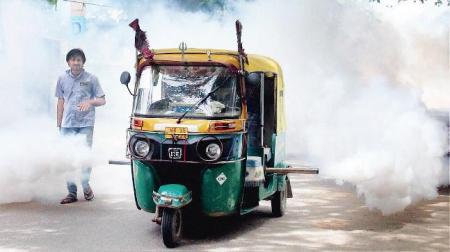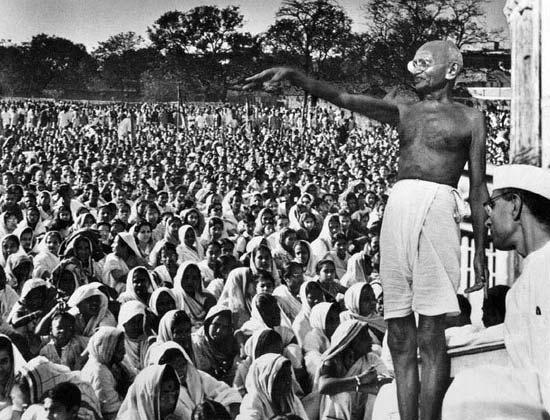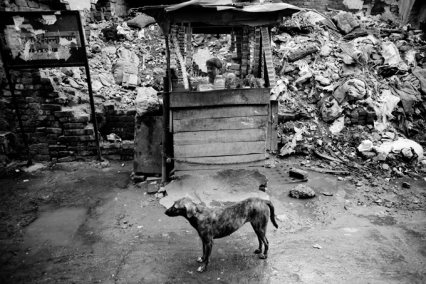From India today, not news to anyone who follows the fight against malaria, and the fight to save a part of the planet to preserve human life.
DDT resistance prompted India to agree to stop production of DDT by 2020 — the last DDT factory remaining. India’s disease fighters tell of frustration trying to control malaria, because abuse of DDT has bred DDT resistant and immune mosquitoes. This is not news.
But India Today has a news hole to fill, and the continuing crises of vector-borne diseases force public health agencies to turn to “fourth generation” pesticides, as insects are now resistant to DDT and malathion.
The story out of New Delhi on March 13 almost adds some poetry to the issue. I repeat the story from India Today in full, partly because I love the lilt of Indian English, and because it tells the story of continuing attempts to get ahead of pesticide resistance in pests, attempts that just don’t seem to be doing the job.
Delhi’s civic agencies asked to use fourth generation pesticides to kill chemical-resistant insects
A small vehicle fogging streets of Delhi, India, with DDT, to fight mosquitoes. File photo from India Today, used to illustrate the story only.
Pesticides such as DDT and malathion, which were once super weapons in the fight against mosquitoes, now seem to have become harmless perfume-like sprays for the blood-sucking parasites.
Scientists at the National Vector Borne Disease Control Programme (NVBDCP), Delhi which is the central nodal agency for prevention of diseases like malaria, dengue, filariasis, kala-azar, Japanese encephalitis and chikungunya, etc, in India has now recommended municipalities in the Capital and other parts of the country to shift to the 4th generation of pesticides that is also the last in the row.
These constitute certain bio-larvicides and insect growth regulators that stop the synthesis of critical hormones in mosquito larvae to prevent them from becoming adult. Only after attaining maturity, do the female Anopheles and Aedes Aegypti mosquitoes suck blood to get protein nutrition to lay eggs.
Scientists explain that the first generation of pesticides was DDT, used since World War II on soldiers in 1940s up till now, as its a powerful poison against mosquitoes. Later, its environmental effects, specifically on birds like vultures, reduced its usage globally.
Then came malathion, which had to be applied in huge quantities, paving the way for 3rdgeneration pesticides like synthetic pyrethroids and temephos. But with reports of mosquitoes developing tolerance towards all of these gradually, scientists are now recommending mixed and increased usage of the fourth generation of pesticides that is also the last line of defence in this class.
Experiments are still going on with genetically modified mosquitoes and introducing batches of mosquitoes injected with wolbachia bacteria in the wild to produce sterile eggs. A senior scientist with the NVBDCP, Civil Lines, said, Just like humans develop resistance towards antibiotics, mosquitoes have also evolved over the past 20-30 years to grow natural defence against DDT, malathion, etc. We are still using these two in virgin areas like forests of northeast India, Odisha, etc. successfully. But we have begun getting reports that even temephos and synthetic pyrethroids have stopped receiving the desired results against mosquitoes.
A pesticide is said to be successful when it kills over 90 per cent of the targeted insect or pest population. Over 3,500 species of mosquitoes, which play host to a number of disease-causing vectors such as zika, yellow fever, west Nile virus, etc. are said to be the deadliest animal family in the world. They kill 700 million people annually world over.
In Delhi itself, at least 10 people died of dengue last year and 9,271 people were affected.The numbers of malaria and chikungunya cases recorded in 2017 stood at 1,142 and 940. In 2016, at least 21 dengue deaths were reported from various city hospitals. And this year, an early onset of the deadly trio dengue, malaria and chikungunya is expected with summer-like weather conditions already.
High temperature and presence of clear water in desert coolers, flower pots, coconut shells, etc, act as excellent breeding sites for the menacing insects.
We have asked municipalities to even use the fourth generation of pesticides pirimiphos-methyl and diflubenzuron in a mix with the previous generation pesticides to delay mosquitoes developing tolerance towards this in the future, the scientist explained. He said, over the years, the pesticides must be rotated in use so that their effectiveness on hardy mosquitoes does not go down.
Dr Himmat Singh, senior scientist at the National Institute of Malaria Research (NIMR), Dwarka, said, The benefit with these two latest pesticides is that they are only hormone-inhibitors, not poisons, and specific to mosquitoes. So they wouldnt have any effect on other insects, birds, mammals, fishes, etc. They are categorised as non-hazardous by WHO. However, their cost has been prohibitive so far, he said.
Delhi municipalities have begun their use after a meeting of scientists and bureaucrats of NVBDCP, NIMR, ministry of health and family welfare and the Central Insecticide Board (CIB) authorised their application in January, sources said.
Dr NR Das, head of the department of Public Health in east MCD said, We have already procured diflubenzuron on NVBDCP directions and been using it for one month satisfactorily. However, we will be able to ascertain its degree of effectiveness only after two to three months.
For at least a decade, India has been the world’s largest producer of DDT, and the largest user, spraying more DDT than the rest of the world together. China and North Korea were the only two other nations making DDT at the end of the 20th century, but both cut off production. Counter to popular conceptions, India has struggled to control malaria, often being the only nation in the world to account increases in the disease from year to year, since 2001. Malaria increased despite increasing DDT application.
To fight malaria effectively DDT spraying should be limited to Indoor Residual Spraying (IRS), which leaves a fine coat of DDT on the walls of sleeping rooms, where malaria-carrying mosquitoes bite humans, then pause on the walls to squeeze water out of the blood they’ve fed on, to reduce weight to fly. Broadscale spraying of DDT only speeds development of resistance in all mosquito species, and many other pests.
India is catching up with the rest of the world on DDT.
Tip of the old scrub brush to India Today’s Twitter feed.




 Posted by Ed Darrell
Posted by Ed Darrell 


























![Maharaja of Cashmere 1875, Harappa.com The Maharajah of Cashmere The Illustrated London News December 18, 1875 [From a longer story on the Prince of Wales visit to India in 1875.] With regard to the Maharajah of Cashmere, whose residence and political relations, beneath the Himalayas and in the Valley of the Upper Indus, are very remote from Bombay, we defer any notice of him till the Prince of Wales goes to visit him in Cashmere. The portrait of this Maharajah is from a photograph by Messrs. Bourne and Shepherd, of India.](https://i0.wp.com/www.harappa.com/engr/gif/kashmah.gif)






